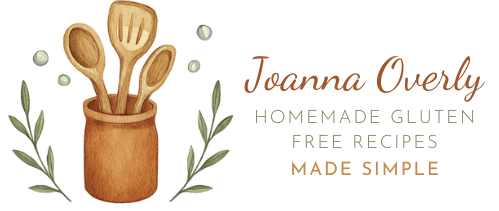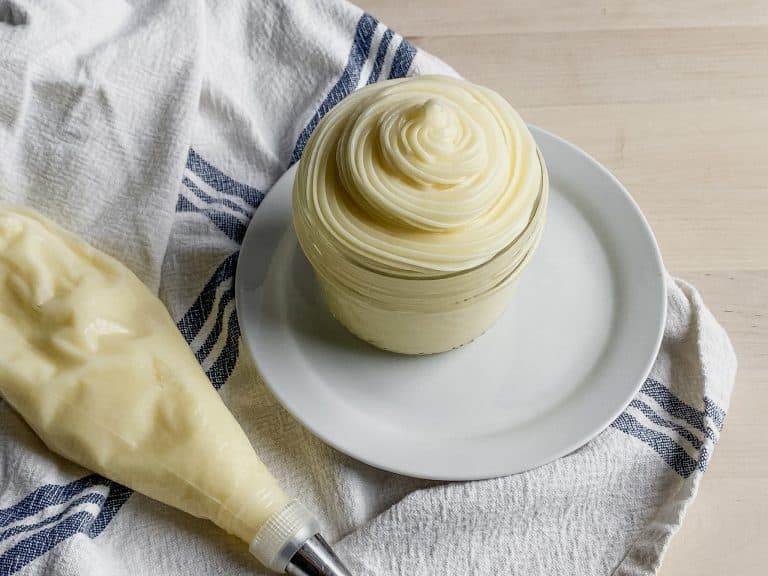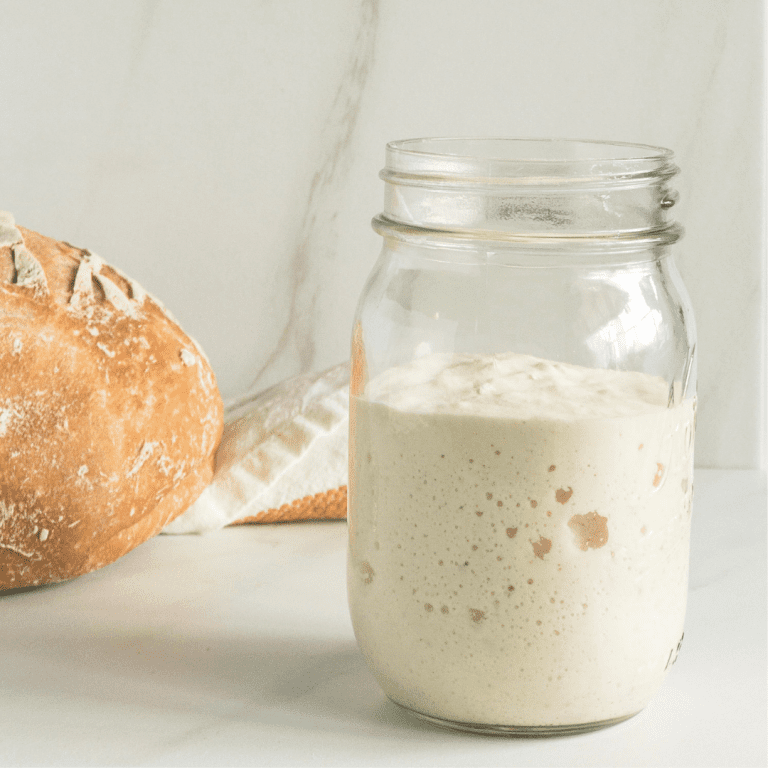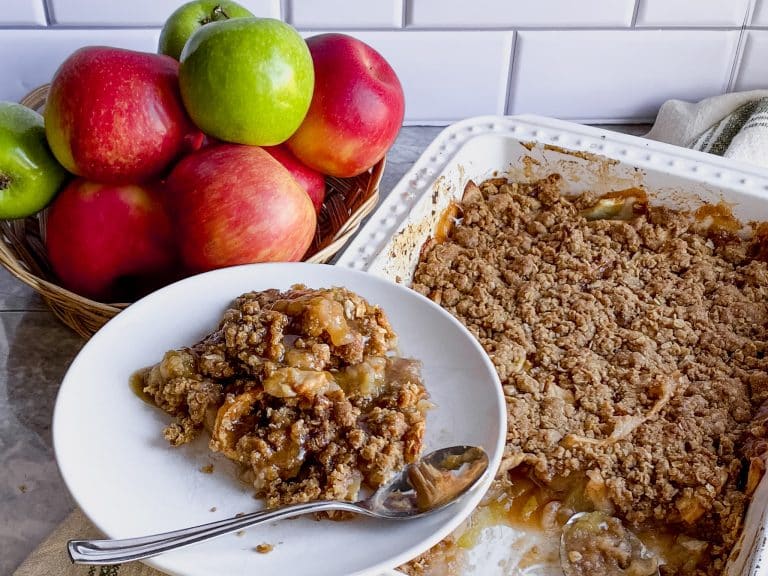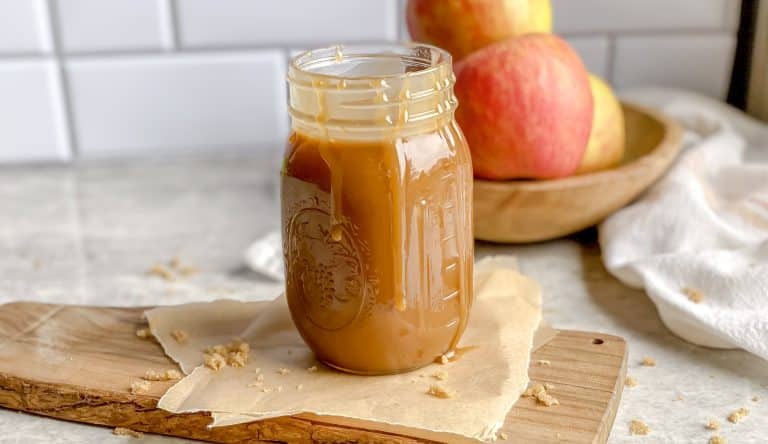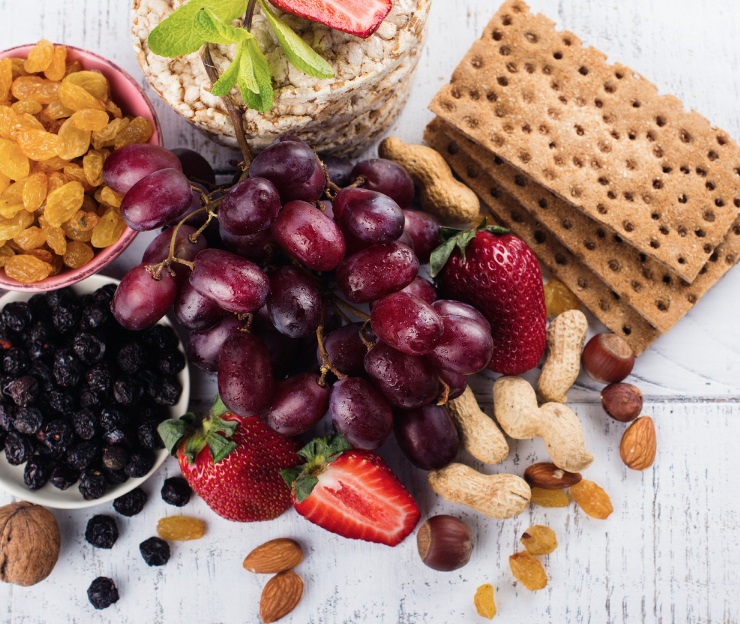Navigating gluten-free flours can feel overwhelming, especially when you’re trying to choose between brown rice flour, sorghum flour, almond meal, or tapioca starch. In this in-depth guide, we’ll break down the best types of flours for a gluten-free diet, whether you’re baking for Celiac disease or experimenting with new gluten-free recipes. From nutty-flavored buckwheat flour to versatile cassava flour, you’ll find what works—and what doesn’t—for your kitchen.
Some of my favorite recipes that use gluten free flours are Gluten Free Sourdough Artisan Bread (Round Loaf), Gluten Free Flour Tortillas Recipe, Gluten Free Pancakes and Gluten Free White Sauce Béchamel Recipe

Please note that this post may contain affiliate links. As an Amazon Associate, I may earn commissions from qualifying purchases, at no additional cost to you. Thank you for your support!
What Is Gluten and Why Avoid It?
Gluten is a protein found in wheat, barley, and rye. It helps give baked goods their stretch and structure—but for some of us, it causes more harm than good. If you have Celiac disease or non-celiac gluten sensitivity, even a small amount of gluten can trigger uncomfortable (or serious) symptoms. That’s why it’s so important to understand what gluten is and where it can hide—like in sauces, spice mixes, and processed foods. Knowing how to spot and avoid it helps you protect your health and feel confident in your kitchen and beyond.
What is Gluten Free Flour?
Gluten-free flour is any flour made from grains, nuts, seeds, or roots that don’t contain gluten—the protein found in wheat, barley, and rye. These flours are safe for those with Celiac disease, gluten sensitivity, or anyone following a gluten-free diet. You’ll find all kinds, from brown rice flour and sorghum flour to almond meal, cassava flour, and even chickpea flour. Each one has its own taste, texture, and best use in baking. They don’t work quite the same as regular flour, but once you get to know them, they’re such a great substitute!
What Gluten Does in Baking
Understanding Gluten-Free Baking Basics
The Importance of Avoiding Cross-Contamination
If you’re baking for someone who needs to be 100% gluten-free, make sure your ingredients—especially flours—are clearly labeled certified gluten-free. Even if a type of flour is naturally gluten-free, trace amounts of gluten from cross-contamination during harvesting, processing, or packaging can still cause a reaction.
Not All Gluten-Free Flours Are the Same
There’s a whole world of gluten-free flours out there—brown rice, sorghum, buckwheat, almond meal, and more—and they all behave differently. Some are light and starchy, some are nutty and dense, and each brings its own flavor and texture to a recipe. The trick is knowing when to use which one.
Why Binding Agents Matter
Since gluten gives baked goods structure and elasticity, many gluten-free recipes call for a little help in that department. Ingredients like xanthan gum, psyllium husk, or guar gum are often added to mimic gluten’s binding power and help hold everything together.

Chart: Gluten Free Flours Flavor Profile and Best Use
| Gluten-Free Flour | Flavor Profile | Best Uses |
|---|
| Almond Flour | Nutty, slightly sweet | Cookies, muffins, quick breads |
| Amaranth Flour | Earthy, grassy, slightly peppery | Crackers, rustic loaves |
| Brown Rice Flour | Mild, slightly nutty | Bread blends, muffins, pancakes |
| Buckwheat Flour | Earthy, bold, slightly bitter | Pancakes, rustic bread, waffles |
| Cassava Flour | Mild, slightly sweet | Tortillas, flatbreads, cakes |
| Chickpea Flour | Earthy, slightly bean-like | Savory breads, crackers |
| Coconut Flour | Mildly sweet, coconut flavor | Cakes, cookies, low-carb baking |
| Corn Flour | Sweet, corn-like | Cornbread, tortillas, muffins |
| Millet Flour | Mild, sweet, slightly corn-like | Cakes, muffins, pancake blends |
| Oat Flour | Mildly sweet, familiar | Cookies, muffins, pancake blends |
| Potato Starch | Neutral, slightly sweet | Structure in light baked goods |
| Quinoa Flour | Grassy, earthy, slightly bitter | Flatbreads, crackers, blending |
| Sorghum Flour | Mildly sweet, hearty | Sandwich bread, flatbreads |
| Tapioca Flour | Neutral, slightly sweet | Binding, chewy texture in bread |
| Teff Flour | Nutty, earthy | Breads, muffins, waffles |
| Tiger Nut Flour | Naturally sweet, nutty | Cookies, muffins, bars |
| White Rice Flour | Neutral, light | Blends, cookies, cakes |
Build Your Own Flour Blend
A good starting point for a homemade gluten-free flour blend is:
50% starchy flour (like tapioca, potato starch, or arrowroot)
25% lighter protein flour (such as brown rice or millet)
25% heavier protein flour (like sorghum, buckwheat, or oat)
Be sure to measure by weight using a digital scale—this keeps things consistent since gluten-free flours can vary a lot in density. Depending on what you’re baking, you may also want to add a binder like xanthan gum or psyllium husk to help with structure and elasticity. This blend gives you a solid foundation you can tweak as you get more comfortable with gluten-free baking.
Common Myths About Gluten-Free Flours
Myth: You can swap gluten-free flour for regular flour one-to-one.
Reality: I wish! Most gluten-free flours need to be blended and used with binders. Without that, your baked goods may turn out dense or crumbly.
Myth: Gluten-free flours are always healthier than white or wheat flour.
Reality: Not always. Some have great health benefits, but others are high in starch and low in fiber. It really depends on the flour and how you use it.
Myth: Gluten-free flours taste bland or strange.
Reality: Not true! Flours like buckwheat, almond meal, or teff flour have rich, nutty flavor and can make your baked goods even better.
Tips for Better Gluten-Free Baking
Understand What Gluten Does
Gluten gives structure and stretch to baked goods. Without it, you’ll need the right gluten-free flours and binders like xanthan gum or psyllium husk to mimic that.
Blend Your Flours
No single flour does it all. Each gluten free flour needs a friend or two. A mix of different gluten-free flours—like almond meal, brown rice flour, or potato starch —gives better texture, flavor, and nutrition.
Don’t Skip the Binder
Binders like xanthan gum, guar gum, or psyllium husk help your dough hold together and bake up like it should. To learn more about psyllium husk, check out my post Why Use Psyllium Husk in Gluten-Free Baking.
Watch the Moisture
Starchy flours (like tapioca flour or potato starch) absorb liquids differently. Add water slowly and let the dough sit to fully hydrate.
Adjust Bake Time and Temp
Gluten-free items often need more time or slightly lower heat. Check for doneness with a thermometer and cool completely before slicing.
Baking without gluten definitely comes with a bit of a learning curve, but once you understand how different gluten-free flours behave and how to balance them with the right binders and moisture, it gets so much easier. Whether you’re making gluten-free bread, cookies, or experimenting with your favorite baked goods, a little practice goes a long way. You’ve got this—and I’m cheering you on every step of the way!
Getting to Know Common Gluten-Free Flours
Gluten-free flours come from all kinds of sources—nuts like almond meal, grains like brown rice flour and sorghum, legumes like chickpea flour, tubers like tapioca starch and arrowroot, and seeds like flax or sunflower. Each one brings its own flavor, texture, and use.
Starchy vs. Protein-Rich Flours
- Starchy flours—like arrowroot starch, cornstarch, potato starch, and tapioca starch—add chewiness and elasticity. Necessary to help lighten your recipes.
- Lighter protein flours, like brown rice flour or millet flour, are great for building structure without weighing things down.
- Heavier protein flours—like buckwheat flour, oat, sorghum, and white teff—add a more hearty texture and flavor.
Nutrition Varies
Some flours, like almond meal and chickpea flour, are rich in protein, healthy fats, and fiber. Others, especially starches, are lighter and better for texture, but offer less in the way of nutritional value.
They Don’t All Absorb the Same
Each flour handles moisture differently. That’s why blends are so common in gluten-free baking recipes—too much of one flour can make your baked goods dry, gummy, or heavy.
Flavors and Colors Matter
Flours like buckwheat or teff can bring a lovely nutty flavor but also darken the final result. Others, like white rice flour, are neutral and work quietly in the background.
Price and Availability Can Vary
Some flours—like oat flour or rice flour—are easy to find and affordable at most local grocery stores. Others, like cassava flour or tiger nut flour, can be pricier or trickier to find depending on where you shop.

Almond Flour

Almond flour is made from finely ground, blanched almonds and is naturally gluten-free. It brings a rich, nutty flavor and tender crumb to baked goods. Because it’s high in healthy fats, protein, and fiber, it adds both moisture and a nutritional boost to recipes like cookies, muffins, and soft cakes.
- Rich in Fat and Moisture
- Almond flour’s fat content helps create soft, moist baked goods. It’s especially helpful in recipes that might otherwise turn out dry.
- Nutty Flavor
- The flavor is mild but distinct. It adds a pleasant nuttiness that complements chocolate, fruit, and warm spices like cinnamon.
- Grain-Free and Nutrient-Dense
- As a grain-free flour, almond flour fits well into Paleo, low-carb, and gluten-free baking. It offers more fiber and protein than many starch-based gluten-free flours.
- Needs Support for Structure
- Almond flour doesn’t provide much structure on its own. It works best when paired with binders like eggs, psyllium husk, or xanthan gum, or when blended with other flours for lift and elasticity.
- How to Store Almond Flour
- Because of its high fat content, almond flour can go rancid if stored at room temperature too long. Keep it in the fridge or freezer for freshness.
- Use with Caution for Allergies
- While almond flour is a great option in the right recipe, I don’t use it all the time—especially when baking for groups or gatherings. Since nut allergies are common, I often choose nut-free flours when I’m sharing baked goods with others.
Arrowroot Flour (Arrowroot Starch)

Arrowroot flour is a fine, white starch extracted from the tropical arrowroot plant. It’s naturally gluten-free, grain-free. Arrowroot flour is prized for its neutral flavor, smooth texture, and clear thickening properties. While it doesn’t offer protein or fiber, it plays an important supporting role in gluten-free baking—especially when it comes to creating soft, cohesive, and tender results.
- Pure Starch and Light Texture
- As a true starch, arrowroot contains no protein or fiber. It’s best used to support structure, enhance moisture, and soften crumb when paired with other flours.
- Neutral in Taste and Color
- Arrowroot won’t compete with other flavors and doesn’t darken your baked goods. It’s great in recipes where you want a clean flavor profile and a light, smooth finish.
- Improves Texture and Tenderness
- This flour excels at moisture retention and crumb softness, making it useful in everything from cookies and muffins to cakes and quick breads.
- Best Used in Blends
- Arrowroot flour isn’t meant to stand alone. It works best when used as about 10–20% of your total flour mix, often alongside protein-rich flours like almond or chickpea flour.
- Great for Thickening
- Outside of baking, arrowroot is one of the best gluten-free thickeners for gravies, pie fillings, sauces, and puddings—especially when you want a clear, glossy finish.
- Hypoallergenic and Digestible
- Arrowroot is gentle on the stomach and ideal for paleo, grain-free, or allergy-sensitive diets. It’s often chosen as a corn-free alternative in blends.
- How to Store Arrowroot Flour
- Because of its fine texture, arrowroot absorbs moisture easily. Keep it sealed in a cool, dry place to prevent clumping and extend freshness.
Buckwheat Flour
Buckwheat flour is made from ground buckwheat groats, which are actually seeds—not grains—and naturally gluten-free. It has a bold, earthy flavor and a dark color that adds a rustic richness to recipes like pancakes, crepes, quick breads, and crackers. It’s also a nutritional powerhouse, offering fiber, antioxidants, and a good amount of plant-based protein.
- Buckwheat is Not a True Grain
- Even though the name includes “wheat,” buckwheat is actually a seed related to rhubarb. It’s completely gluten-free and safe for those with Celiac disease or gluten sensitivity, as long as it’s processed in a certified gluten-free facility.
- Bold, Earthy Flavor
- The taste is distinct—deep and nutty. It adds character to both sweet and savory recipes but can overwhelm more delicate flavors if used on its own.
- High in Protein and Fiber
- Buckwheat’s whole-seed profile brings a lot of nutrition to the table. It helps improve crumb structure, adds substance, and supports digestive health when used in the right proportions.
- Dark in Color
- This flour gives baked goods a hearty, wholesome look. It darkens the final product, which works especially well in rustic or whole grain-style recipes.
- Best Used in a Blend
- Because of its strong flavor and dense texture, buckwheat flour works best when paired with lighter flours like white rice or tapioca starch. A balanced blend keeps the texture soft and the flavor from becoming overpowering.
- Traditionally Used Around the World
- Buckwheat has been used for centuries in dishes like soba noodles and European-style rustic breads. It brings cultural depth and authenticity to both modern and heritage recipes.
- How to Store Buckwheat Flour
- Since buckwheat is a whole seed flour, it contains natural oils that can spoil over time. Keep it in a cool, dry place—or even the fridge—for best shelf life and flavor.
Chickpea Flour
Chickpea flour—also known as gram flour or besan—is made from finely ground dried chickpeas and is naturally gluten-free. It’s commonly used in Indian, Middle Eastern, and Mediterranean cooking, and it brings a nutty, slightly earthy flavor along with a hearty dose of protein and fiber. In gluten-free baking, it shines as a natural binder and adds substance to recipes like savory pancakes, flatbreads, and even dense cakes.
- High in Protein and Fiber
- This flour is great for adding plant-based protein and fiber, which makes it an excellent fit for gluten-free diets that need a bit more nutritional density.
- Dense but Filling
- On its own, chickpea flour can result in heavier, more compact baked goods. It’s best used in blends with lighter flours like rice or tapioca to balance out the texture.
- Nutty, Distinct Flavor
- It has a strong, earthy taste that works beautifully in savory recipes, but can overpower sweets if not balanced well with sugar, vanilla, or warm spices.
- Natural Binder
- Chickpea flour does a great job binding dough and batter, often eliminating the need for gums in some recipes—especially in savory applications.
- Used in Traditional Recipes
- How to Store Chickpea Flour
- Due to its natural oil content, chickpea flour can go rancid if left out too long. Store it in a cool, dry place, and consider refrigerating or freezing it for longer shelf life.
- May Cause Digestive Sensitivity
- Some people find chickpea flour harder to digest. If you’re new to using it, start with small amounts and see how it goes—especially when serving a crowd.
Coconut Flour

Coconut flour is made from finely ground, dried coconut meat and is naturally gluten-free and grain-free. It has a gentle sweetness and a mild coconut aroma, which pairs well with flavors like vanilla, citrus, and warm spices. Because it’s high in fiber and lower in carbs than many other flours, it’s a popular choice in Paleo, keto, and low-carb baking.
However, coconut flour behaves quite differently from other flours. Its super absorbent nature means recipes need extra moisture—and usually more eggs or a binder—to get the right texture and structure.
- Absorbs a Lot of Liquid
- Coconut flour can soak up two to three times its weight in liquid. Without enough moisture, your baked goods may turn out dry or crumbly. When using coconut flour, you’ll usually need to increase the liquid ingredients or reduce the overall amount of flour used.
- Fiber-Rich and Filling
- This flour is packed with fiber, which is great for digestive health and helps give structure to your bakes. It also makes recipes more filling, which can be helpful in breakfast or snack items.
- Works Best in a Blend
- You’ll rarely use coconut flour on its own. It typically replaces only 20–25% of the total flour in a recipe. Balance it with added liquid and binders for best results.
- Gives a Subtle Coconut Taste
- While the flavor is mild, it does come through in the finished product. It’s lovely when paired with things like vanilla, lemon, cinnamon, or even chocolate.
- How to Store Coconut Flour
- To keep coconut flour fresh and prevent clumping or spoilage, store it in the fridge or freezer—especially if you don’t use it often.
Oat Flour

Oat flour is made by grinding whole oats into a soft, fine powder. It’s naturally gluten-free and has a mildly sweet flavor with excellent moisture-retaining properties. Because of its light texture and gentle taste, it’s one of the most versatile flours in gluten-free baking—perfect for muffins, pancakes, and quick breads. It’s also rich in beta-glucan fiber, which supports heart and digestive health.
Use only certified gluten free oats
While oats are naturally gluten-free, cross-contamination is common during processing. Always look for certified gluten-free oat flour to ensure safety for anyone with Celiac disease or gluten sensitivity.
- Soft Texture and Subtle Sweetness
- Oat flour has a light, neutral taste that blends beautifully into both sweet and savory baked goods. It won’t overpower other flavors and contributes a soft, tender crumb.
- Great for Moisture
- This flour holds moisture well, which helps keep baked goods tender. However, too much can lead to a dense or gummy texture, so balance it with drier flours like rice or almond flour.
- High in Soluble Fiber
- Oat flour is a good source of beta-glucan, a fiber known for its heart-healthy benefits and support for digestion. It adds subtle nutrition while keeping things soft and satisfying.
- Best in Quick Bakes
- Because it doesn’t provide structure on its own, oat flour works best in recipes like muffins, snack cakes, and pancakes where gluten-like elasticity isn’t needed.
- Works Well in Blends
- Oat flour pairs especially well with tapioca starch, almond flour, and rice flour, creating a well-rounded flour mix for everyday use.
- How to Store Oat Flour
- Since oats contain natural oils, oat flour can spoil if exposed to heat or air. Keep it in a cool, airtight container, and refrigerate or freeze if you won’t use it quickly.
Potato Flour vs. Potato Starch

Though they sound similar, potato flour and potato starch are not the same—and knowing the difference is key in gluten-free baking. Both are naturally gluten-free and made from potatoes, but they serve very different purposes in a recipe.
Potato Flour
Potato flour is made from whole, cooked, and dehydrated potatoes (skin and all), then ground into a fine, creamy-colored powder. It has a distinct potato flavor, retains more nutrients, and adds moisture and heaviness to baked goods.
Key Points:
- Adds Moisture: Ideal for hearty breads and rolls, especially when a moist crumb is desired.
- Strong Flavor: Has a noticeable potato taste, so it’s best used in small amounts.
- Dense Texture: Can weigh down baked goods if overused—typically used at 5–10% of a flour blend.
- Absorbs a Lot of Liquid: Helps retain moisture but may require recipe adjustments to avoid gumminess.
- Best Used In: Yeast breads, rolls, and savory baked goods.
Potato Starch
Potato starch is extracted just from the starchy part of the potato—no skin, no fiber, and no flavor. It’s a white, fine powder with a very neutral taste. Potato starch is commonly used as a thickener or as part of a gluten-free flour blend to add lightness and elasticity.
Key Points:
- Neutral Taste: Won’t interfere with other flavors in your recipe.
- Lightens Texture: Adds tenderness and softness, especially to cakes, muffins, and cookies.
- Great Thickener: Works well in gravies, sauces, and pie fillings.
- Heat Sensitive: Add to recipes toward the end of cooking when thickening liquids.
- Best Used In: Baked goods needing a tender crumb or as a thickener in cooking.
Quick Tip
If you’re building your own gluten-free flour blend, potato starch is a great option to use in the starchy flour category (alongside tapioca or arrowroot). Potato flour, on the other hand, should be used sparingly—too much can make things heavy or overly moist.
Rice Flour

Rice flour—whether from white rice or brown rice—is one of the most widely used gluten-free flours in the world, and for good reason. I personally use it in a lot of my recipes because it’s so versatile and dependable. Its neutral flavor and fine texture make it a great base in flour blends, and it works beautifully in everything from light cakes to crispy coatings.
You’ll find it in both brown and white rice varieties. While brown rice flour brings more fiber and a slightly nutty flavor, white rice flour is lighter and milder, which makes it especially good in delicate baked goods and blends.
- White Rice Flour vs. Brown Rice Flour
- White rice flour is softer and more neutral in flavor, making it ideal for cakes, muffins, and cookies. Brown rice flour includes the bran, giving it a heartier texture and more fiber, which works well in bread blends or savory recipes.
- Neutral Flavor
- Because rice flour has such a mild flavor, it plays well with others—it doesn’t overpower sweet or savory ingredients, which makes it one of the easiest gluten-free flours to work with in blends.
- Needs Support
- On its own, rice flour doesn’t have much binding power. You’ll need to pair it with a binder like xanthan gum or use it alongside higher-protein flours for better structure in baked goods.
- Watch for Grittiness
- Not all rice flours are milled the same. Finely milled rice flour (often labeled “superfine”) gives a smoother crumb. Coarse varieties can lead to a gritty texture, especially in cakes and cookies.
- Great for More Than Baking
- Aside from baked goods, rice flour works well as a thickening agent for sauces and gravies. It also makes a light, crisp coating for frying and is common in Asian cooking, from noodles to crepes.
- How to Store Rice Flour
- Rice flour has a relatively long shelf life and stores well in a cool, dry place. I like to keep mine in an airtight container to protect it from moisture and clumping.
Sorghum Flour

Sorghum flour is milled from an ancient whole grain that’s naturally gluten-free and packed with protein, fiber, and antioxidants. It has a mild, slightly sweet flavor that blends beautifully into gluten-free breads, muffins, and pancakes. Thanks to its soft texture and natural binding ability, it’s a staple in many of my flour blends—especially when I want a more wholesome, balanced bake.
- Whole Grain Goodness
- As a whole grain, sorghum retains the bran and germ, which boosts its fiber content, micronutrients, and antioxidant value. It also tends to need a bit more hydration than refined flours when baking.
- Mild, Sweet Flavor
- The flavor is light and subtly sweet—not earthy or bitter—which makes it great in both sweet and savory recipes. It pairs well with warming spices like cinnamon, nutmeg, and cardamom.
- Better Binding Than You’d Expect
- While it doesn’t contain gluten, sorghum has more natural binding properties than many other gluten-free flours, which helps improve crumb texture when blended thoughtfully.
- Versatile and Time-Tested
- Sorghum has been used in African and Asian baking traditions for centuries. It works well in modern gluten-free baking, especially in quick breads, muffins, and pancakes.
- Pair With Protein Flours
- It blends beautifully with almond meal, chickpea flour, or other high-protein flours, helping create a tender crumb and more balanced texture in baked goods.
- Choose Finely Milled
- For the best results, go with a finely ground sorghum flour. Coarse versions can lead to gritty or dense outcomes—especially in lighter bakes like cakes and cookies.
- How to Store Sorghum Flour
- Keep sorghum flour in an airtight container in a cool, dry place. This helps preserve its natural sweetness and extends its shelf life.
Tapioca Flour (Tapioca Starch)

Tapioca flour—also called tapioca starch—is a fine, white powder made from the cassava root. It’s naturally gluten-free and has no flavor of its own, but it plays a major supporting role in many gluten-free baking recipes. Thanks to its pure starch content, it adds that signature chewiness, bounce, and flexibility that’s so important in things like bread, pizza dough, and pastries.
- Pure Starch
- Tapioca flour is nearly 100% starch, so while it doesn’t offer much in terms of protein or fiber, it’s excellent at creating that elastic, chewy texture that gluten-free baked goods often lack.
- Excellent Binder
- When heated, it turns sticky and gel-like, which makes it a powerful binding agent—especially useful in yeast breads, rolls, and gluten-free pizza crust.
- Neutral Flavor
- Since it’s completely flavorless and colorless, tapioca flour won’t affect the taste or appearance of your baked goods. It works quietly in the background to enhance texture.
- Derived from Cassava
- Made from the cassava root, a tropical tuber widely used in South America and Asia, tapioca flour is both sustainable and naturally gluten-free.
- Use in Moderation
- While incredibly useful, it’s best to use tapioca flour as about 10–30% of your flour blend. Too much can lead to overly sticky or gummy results.
- Tapioca Starch Works Well with Protein Flours
- Because it doesn’t provide any structure on its own, pairing it with higher-protein flours like sorghum, chickpea, or almond flour helps improve crumb and overall dough strength.
- Great for Thickening Too
- Outside of baking, tapioca flour is also fantastic for thickening sauces, gravies, and pie fillings—just whisk it into cold liquid before heating to avoid clumps.
Blending Gluten-Free Flours for Optimal Baking
Using a single gluten-free flour rarely delivers the flavor, texture, or structure that wheat flour provides. That’s why blending flours is such an important part of successful gluten-free baking. When done thoughtfully, blending allows you to balance moisture, crumb, and elasticity, giving your bakes a tender texture and better structure—whether you’re making bread, cookies, or cakes.
- Combine for Balance
- Think of each flour as having strengths and weaknesses. Pair protein-rich flours (like almond or chickpea) with starches (like tapioca or arrowroot) and mild base flours (like oat or rice) to create a well-rounded result.
- Match the Blend to the Bake
- Different baked goods need different flour ratios. A bread blend needs more protein and binding power, while cake or muffin blends should be lighter and softer.
- Watch the Liquids
- Each flour absorbs moisture differently, so blending means adjusting your liquid ingredients too. Start slowly and tweak as needed—especially with new combinations.
- Add Binders for Structure
- Even the best blend can fall apart without help. Add xanthan gum, guar gum, or psyllium husk to mimic gluten’s stretch and hold everything together.
- Keep It Simple
- More isn’t always better. Stick with 3 to 4 flours in a blend to avoid muddled flavors or unpredictable textures.
- Test and Take Notes
- Start small. Bake a test batch, jot down what worked (and what didn’t), and make adjustments from there. Keeping notes makes it easy to recreate your best results.
Tips for Substituting Gluten-Free Flours in Recipes
Swapping in gluten-free flours isn’t as simple as a 1:1 trade with wheat flour. Each flour behaves a little differently, and getting the texture, flavor, and structure just right takes a bit of adjustment. With a few smart tweaks and some practice, though, you can absolutely tailor traditional recipes into gluten-free favorites.
- Know Your Flour
- Different flours absorb moisture differently, have unique flavors, and affect texture in their own way. Learning what each flour brings to the table helps you predict how your bake will turn out—and what you might need to tweak.
- Adjust Liquids
- Some gluten-free flours (like coconut or chickpea) soak up more liquid, while others (like tapioca) don’t. Keep an eye on batter or dough consistency and don’t be afraid to add a splash more liquid or hold some back.
- Use Binders
- Wheat has gluten. Gluten-free flours don’t. That’s why you need to add a binder like xanthan gum, guar gum, or psyllium husk to help hold your bake together—especially in breads or cookies.
- Blend When You Can
- Single flour swaps rarely give the best results. A blend of flours creates better texture, flavor, and structure. For example, pair a starchy flour with a high-protein flour and something mild to round it out.
- Rethink Bake Time
- Gluten-free baked goods often need lower oven temperatures and a longer bake time to stay moist inside and bake through without falling apart.
- Test Small
- Start with a small batch when trying a new flour swap. That way, you can tweak things without wasting ingredients or time.
- Match the Flavor
- Some gluten-free flours have strong personalities (looking at you, buckwheat and chickpea). Make sure they complement your recipe—or tone them down with milder flours and flavors.

Your Guide to Store-Bought Gluten-Free Flour Mixes
There are a variety of gluten-free flours as well as gluten-free products available at your local grocery stores or for purchase online. Here are some of the top gluten free blends for those who are gluten intolerant or deal with Celiac Disease.
King Arthur Measure for Measure Gluten-Free Flour
Pros:
- Easy 1:1 substitution: Designed for direct replacement of all-purpose flour in non-yeasted recipes.
- No dairy ingredients: Suitable for dairy-free diets.
- Includes xanthan gum: Eliminates the need for additional binders.
- Good texture and flavor: Produces baked goods with a pleasant taste and structure .
Cons:
- Not ideal for yeast-based recipes: May not provide sufficient rise in breads .
- Contains additives: Includes cellulose and other additives that some may prefer to avoid.
Bob’s Red Mill Gluten-Free 1-to-1 Baking Flour
Pros:
- Versatile use: Works well in cookies, cakes, brownies, and pancakes.
- Includes xanthan gum: Simplifies gluten-free baking by eliminating the need for additional binders.
- Widely available: Easily found in many grocery stores.
Cons:
- Distinct flavor: Some users report a noticeable aftertaste .
- Texture issues: May result in denser baked goods compared to other blends .
Cup4Cup Multipurpose Gluten-Free Flour
Pros:
- Excellent texture: Produces light, fluffy baked goods that closely mimic those made with wheat flour.
- Developed by chefs: Created by Thomas Keller’s team, ensuring professional-quality results.
Cons:
- Higher cost: More expensive than some other gluten-free flour blends.
Namaste Foods Perfect Flour Blend
Pros:
- Allergen-friendly: Free from gluten, dairy, nuts, soy, and other common allergens.
- Versatile: Suitable for a wide range of recipes, including breads and cookies.
- Organic options available: Offers organic versions for those seeking certified organic products.
Cons:
- Can produce gummy texture: Some users report a gummy consistency in certain baked goods .
- May require recipe adjustments: Might need additional tweaking for optimal results in some recipes.
Pamela’s Products Gluten-Free All-Purpose Flour Artisan Blend
Pros:
- No dairy or nuts: Suitable for those with specific dietary restrictions.
- Good for yeast breads: Performs well in recipes requiring yeast, especially when combined with binders like psyllium husk .
- Pleasant texture: Produces baked goods with a texture similar to those made with wheat flour.
Cons:
- May not brown as well: Some users note less browning in baked goods .
- Slightly higher price point: More expensive compared to some other blends.
Pillsbury Best Gluten-Free All-Purpose Flour Blend
Pros:
- Affordable: Generally priced lower than many other gluten-free flour blends.
- Includes xanthan gum: Simplifies baking by eliminating the need for additional binders.
- Widely available: Found in many grocery stores.
Cons:
- Limited versatility: May not perform as well in a wide range of recipes compared to other blends.
- Performance in yeast breads: Some users report poor results in yeast-based recipes, with dry and inedible outcomes.
Comparison Chart: Top Gluten Free Flour Blend Brands
| Brand | Best For | Notable Strengths | Potential Drawbacks |
|---|---|---|---|
| Bob’s Red Mill 1-to-1 | Cookies, cakes, pancakes | Includes xanthan gum, versatile | Distinct flavor, denser texture |
| Cup4Cup Multipurpose | Cakes, pastries | Light, fluffy texture; easy to use | More expensive than other blends |
| King Arthur Measure for Measure | Non-yeasted baked goods | Easy substitution, no dairy | Not ideal for yeast breads |
| Namaste Foods Perfect Blend | Allergen-friendly baking | Free from common allergens, versatile | Can be gummy, may need recipe tweaks |
| Pamela’s Artisan Blend | Yeast breads, general baking | No dairy/nuts, good texture | Less browning, slightly pricier |
| Pillsbury Best Gluten-Free Blend | Budget-friendly baking | Affordable, includes xanthan gum | Poor performance in yeast breads |
I hope this post on gluten-free flours was helpful! I’d love to know—what brought you here, and did you find the answers you were looking for? Let me know in the comments!
Pin It for Later

